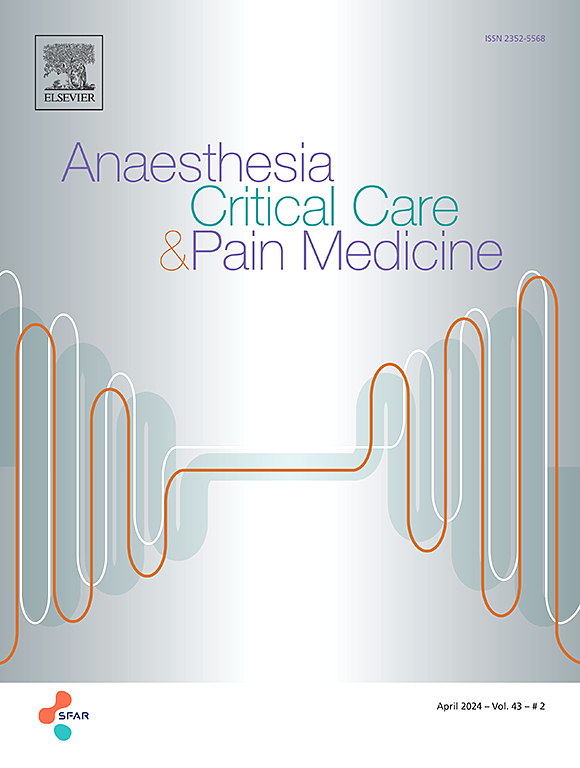危重患者抗菌药物治疗的优化,临床医生和研究人员必须知道的。
IF 4.7
3区 医学
Q1 ANESTHESIOLOGY
引用次数: 0
摘要
有效的脓毒症治疗不仅需要及时给予适当的抗菌药物,还需要精确的剂量,以最大限度地提高重症监护病房(icu)患者的存活率。然而,危重患者抗生素的药代动力学(PK)和药效学(PD)与普通人群有显著差异。了解这些病理生理变化对于优化抗生素治疗至关重要。在这种情况下,适当的剂量是指在感染部位达到治疗药物浓度的策略,确保临床和微生物有效性,同时最大限度地降低抗生素相关毒性的风险。此外,通过持续输注优化抗生素给药模式(特别是β -内酰胺类药物)已显示出益处,包括改善PK/PD目标的实现、更高的临床治愈率和更好的微生物根除。为了确保适当的抗菌药物剂量,治疗药物监测(TDM)是首选的方法。然而,TDM并非普遍适用于所有icu或所有抗菌药物。如果没有,临床医生必须依靠诸如患者的临床状况、确定的病原体、需要体外治疗的器官功能障碍的影响以及抗菌剂的物理化学性质等因素来指导剂量决定。在危重患者之间,甚至在同一患者的ICU住院期间,抗菌素的药代动力学可能存在很大差异,这强调了个体化给药策略和动态重新评估的必要性。本综述旨在概述危重患者观察到的关键病理生理变化及其对抗菌药物剂量决定的影响,同时也提供实际考虑,以帮助临床医生优化这类患者的抗菌药物治疗。最后,将探讨为危重患者提供最佳抗菌治疗的突出挑战,重点介绍未来的研究领域。本文章由计算机程序翻译,如有差异,请以英文原文为准。
Optimization of antimicrobial therapy in critically ill patients, what clinicians and searchers must know
Effective sepsis treatment requires not only the timely administration of appropriate antimicrobials but also precise dosing to maximize patient survival in intensive care units (ICUs). However, the pharmacokinetics (PK) and pharmacodynamics (PD) of antibiotics in critically ill patients differ significantly from those in the general population. Understanding these pathophysiological changes is essential for optimizing antibiotic therapy. In this context, adequate dosing refers to strategies that achieve therapeutic drug concentrations at the infection site, ensuring both clinical and microbiological effectiveness while minimizing the risk of antibiotic-related toxicity.
Additionally, optimizing the mode of antibiotic administration—particularly for beta-lactams—through continuous infusion has shown benefits, including improved achievement of PK/PD targets, higher clinical cure rates, and better microbiological eradication.
To ensure proper antimicrobial dosing, therapeutic drug monitoring (TDM) is the preferred approach. However, TDM is not universally available in all ICUs or for all antimicrobial agents. In its absence, clinicians must rely on factors such as the patient's clinical condition, the identified pathogen, the impact of organ dysfunction requiring extracorporeal therapies, and the physicochemical properties of antimicrobials to guide dosing decisions. The pharmacokinetics of antimicrobials can vary widely between critically ill patients and even within the same patient throughout their ICU stay, emphasizing the need for individualized dosing strategies and dynamic reassessments.
This review aims to outline the key pathophysiological changes observed in critically ill patients and their influence on antimicrobial dosing decisions, while also providing practical considerations to help clinicians optimize antimicrobial therapy in this patient population. Finally, the outstanding challenges in delivering optimal antimicrobial therapy to critically ill patients will be explored, highlighting areas for future research.
求助全文
通过发布文献求助,成功后即可免费获取论文全文。
去求助
来源期刊

Anaesthesia Critical Care & Pain Medicine
ANESTHESIOLOGY-
CiteScore
6.70
自引率
5.50%
发文量
150
审稿时长
18 days
期刊介绍:
Anaesthesia, Critical Care & Pain Medicine (formerly Annales Françaises d''Anesthésie et de Réanimation) publishes in English the highest quality original material, both scientific and clinical, on all aspects of anaesthesia, critical care & pain medicine.
 求助内容:
求助内容: 应助结果提醒方式:
应助结果提醒方式:


